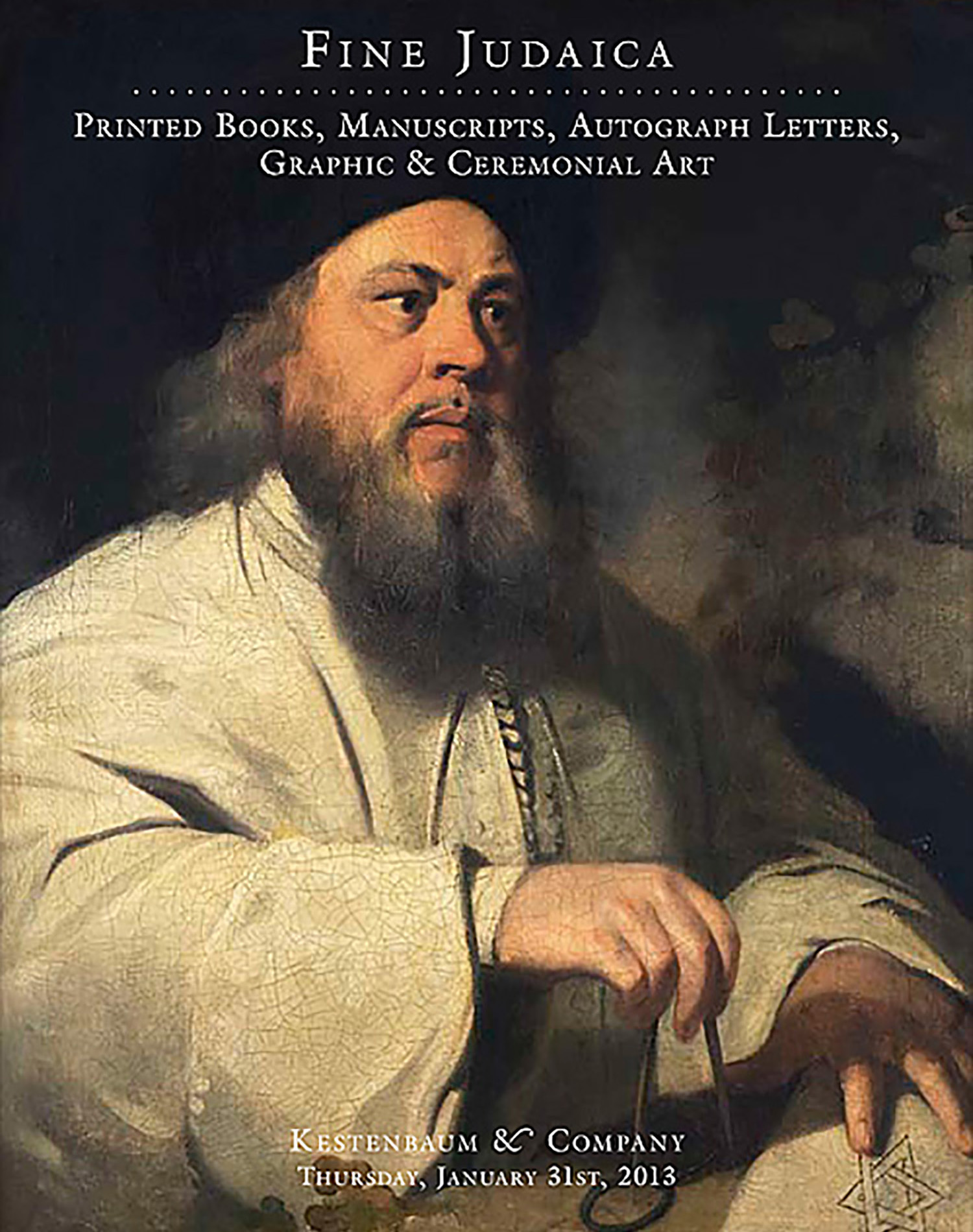Birkei Yosef. Commentary to Shulchan Aruch - Even Ha’Ezer, Chapter IV.

AUCTION 57 |
Thursday, January 31st,
2013 at 1:00
Fine Judaica: Printed Books, Manuscripts Autograph Letters, Graphic & Ceremonial Art
Lot 245
AZULAI, CHAIM JOSEPH DAVID.
Birkei Yosef. Commentary to Shulchan Aruch - Even Ha’Ezer, Chapter IV.
Circa 1770
Est: $5,000 - $7,000
<<An Unknown Autograph Mahadurah of The Chida’s Birkei Yosef With Numerous Significant Variants.>>
One of the greatest Rabbinic authorities of his day, R. Chaim Joseph David Azulai (1724-1806), known by the acronym Chid”a, spent most of his life as a shada”r (shelucha derabbanan), emissary and fundraiser on behalf of the Jewish community of Eretz Israel. His travels on behalf of the Yishuv took him throughout Europe and North Africa. Born in Jerusalem, he spent his final years in Livorno, Italy, where he was buried. In 1960, his remains were disinterred and reburied in the Har HaMenuchoth cemetery in the Givath Shaul section of Jerusalem.
The Chid”a was an unusually prolific scholar, producing some 150 works. What is truly unique about the Chid”a was his skill as a bibliographer. Wherever he traveled, he made notes of the libraries encountered. From these notes, he forged his monumental bibliographic work, Shem HaGedolim, which is divided both according to authors and works. In his observations, Azulai displays a critical eye of history, which oftentimes anticipates modern scholarship.
According to his biographer Meir Benayahu, the Chid”a began the composition of Birkei Yosef, the commentary to Shulchan Aruch as early as 1754, and continued to labor on it throughout his travels. See M. Benayahu, Rabbi H.Y.D. Azulai (1959), p. 107; A. Ya’ari, Shluchei Eretz Yisrael (1977), pp. 569-580; H. Rosenberg, “Unpublished Works of Hayyim Joseph David Azulai,” Kiryath Sepher, V (1928-1929), pp. 159, 261; EJ, Vol. III, cols. 1019-1020.
The present manuscript discusses laws of forbidden marriages, specifically with an Egyptian, and also the questionable permissibility of a Jew dwelling in Egypt in present times. Comparative analysis of the manuscript reveals numerous significant variants. In one instance, a few lines of the manuscript are not to be found in the printed version at all. On the other hand, entire passages found in the printed version are wanting in the manuscript. In another instance, the printed version contains an error which significantly changes the meaning of the passage. Finally, there are many differences in style, whereby the same thought is expressed in different language. As the composition of Birkei Yosef continued for at least twenty years, it stands to reason there would exist more than one mahadurah (edition) of the work. Add to this the fact that the author led the life of a shada”r or itinerant emissary, it becomes even more understandable that there would exist some duplication of effort. For example, in an entry in his diary Ma’agal Tov (p. 59), datelined Tunis, 1774, the Chid”a writes: “I forgot the part of Birkei Yosef in which I wrote many novellae” (see Benayahu, p. 107). Because of his peripatetic lifestyle, some biographers speculate that many of Chida’s works are notably abbreviated. Given the fact that he was constantly traveling, the author could produce short works, whereas it would be more difficult to sustain a longer work. Perhaps our mahadurah (edition) - so different from the printed version - is the tell-tale sign of the Chida’s wanderings.
